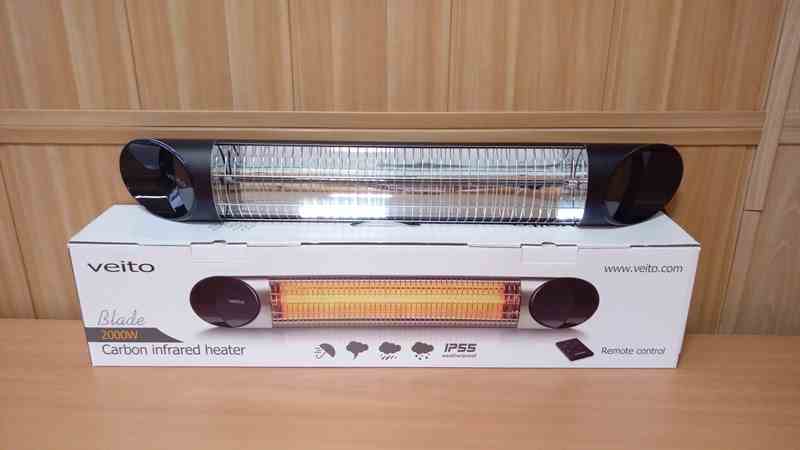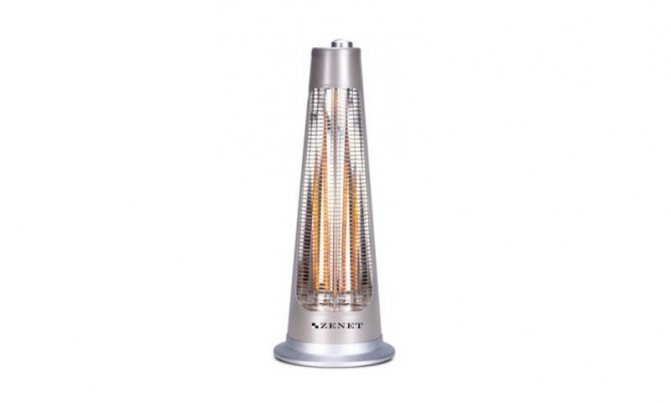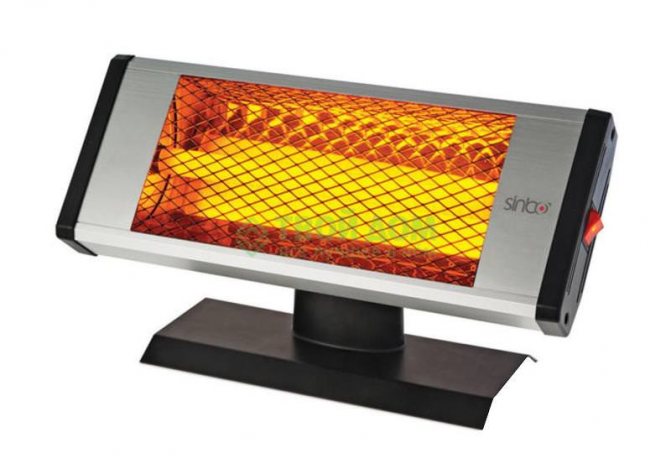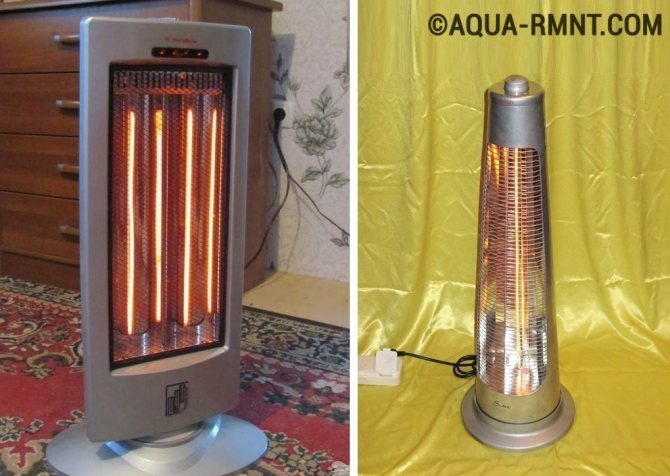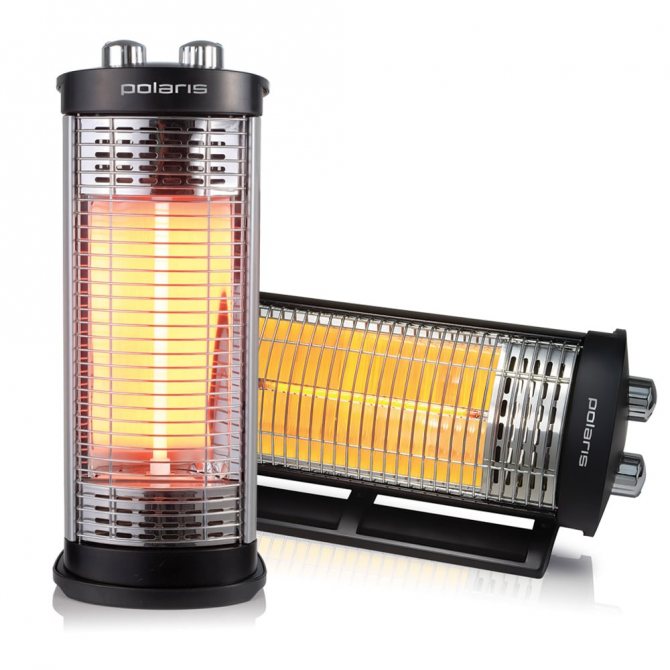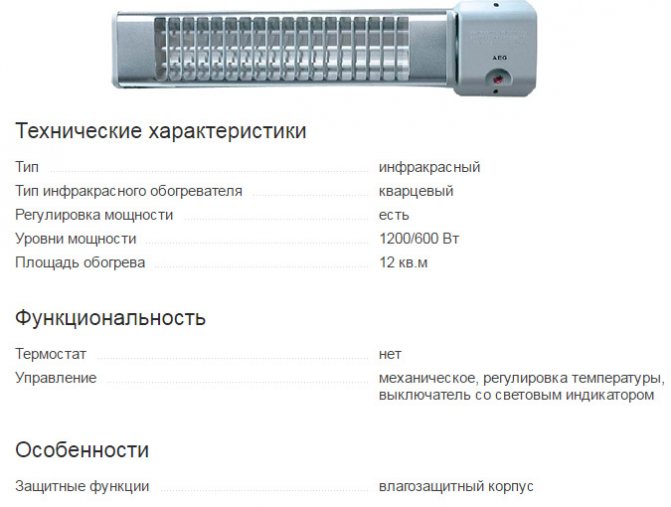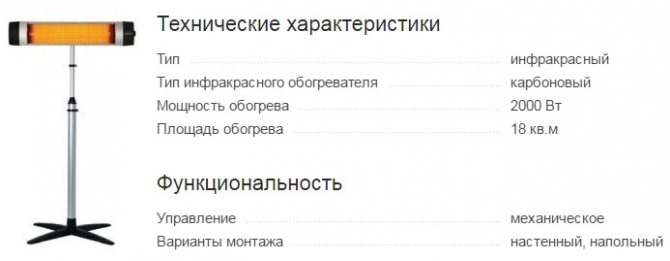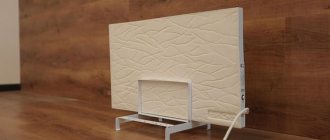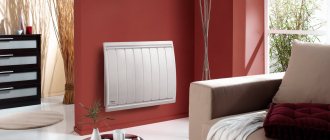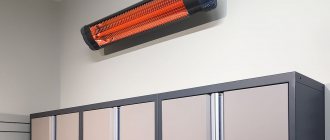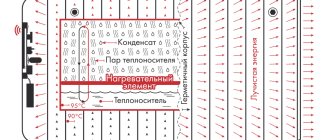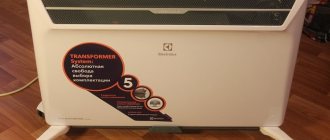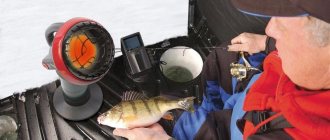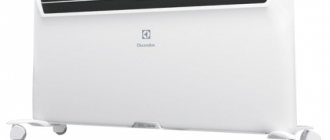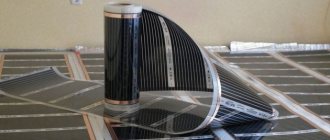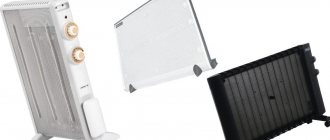Features of infrared heating with carbon fiber (carbon filament)
Heat transfer is a spontaneous irreversible process of energy transfer from more heated bodies or parts of the body to less heated ones. There are three types of heat transfer: heat conduction, convection and radiation.
Thermal conductivity - the property of a material to transfer heat through the entire thickness from one surface to another, if these surfaces have different temperatures. Thermal conductivity depends on the porosity, moisture content and bulk density of the material.
Convection is a type of heat transfer in which heat is transferred due to the mixing of large volumes of matter.
Heating Cable 24K 18.5ohm (Teflon Carbon Fiber Wire)
Convection is observed in liquids and gases.
Radiation is a type of heat transfer carried out by means of electromagnetic waves (thermal radiation) emitted by heated bodies. The spectrum of radiation depends on the body temperature. For reference: the intensity of heat transfer by heat conduction and convection is proportional to the temperature, and the radiant heat flux is proportional fourth degree temperature... The sun is a powerful radiator of thermal energy. Residential, office and industrial premises are often heated with electric heat emitters, the reddish glow of their spirals is visible thermal radiation, close to the infrared part of the spectrum. The room is heated by heat, which is carried mainly by the invisible infrared part of the radiation (radiant heat transfer). It is known that a body heated to a certain temperature emits thermal energy in the infrared range of the spectrum and can transfer this energy through radiant heat exchange to other bodies. Thus, the heat from an electric infrared heater is akin to the sun's rays, only without the harmful ultraviolet part, it creates comfortable conditions for humans and animals, including at air temperatures 4 or more degrees below comfortable, does not dry the air, does not create air movement, raising dust, in contrast to the widespread convection method.
Applications of infrared carbon heaters Heating of premises: • heating of industrial, office and household premises as the main and additional heating; • local heating outdoors, including at negative air temperatures; • local heating of workplaces in premises large in area and height; • heating of commercial stalls, stalls, temporary structures; • heating of greenhouses.
In agricultural production: • heating calves, piglets and other young animals in animal husbandry; • drying of grain and other agricultural products;
At home: • effective heating of people, animals, objects in the moving air; • heating of balconies, loggias, verandas and terraces; • for various purposes: from heating water in an aquarium to drying mushrooms.
Other: • heating of mobile objects: electric carriages, trolleybuses, elevators, etc .; • heating and maintaining the temperature of water and other liquids (solutions) above the freezing point in a non-contact way; • drying of paint and varnish coatings; • local drying in finishing works in construction; • wood drying; • anti-icing heating of windshields in transport.
Carbon heater for home
Carbon heater - a device consisting of carbon fiber, which is enclosed in a vacuum quartz tube and heats the room using infrared radiation.
This is a fairly new type of heaters, which was invented at the turn of the two millennia and quickly gained popularity among buyers, due to its performance and original appearance.
The device and principle of operation of infrared carbon heaters
A carbon heater is a type of infrared heating device that uses a hydrocarbon filament instead of a tungsten filament as a heating element.
Such a heating element has a high thermal conductivity and, accordingly, has a higher heat transfer. In this regard, a 1 kW carbon heater heats a room with the same area and to the same temperature as, for example, an oil cooler with a power of 2-2.5 kW.
The carbon filament is enclosed in a tube from which air is completely evacuated. An electric current passes through it and it heats up. As a result of this, infrared rays are emitted, which fall on objects and heat them up. Then these objects, the heating depth of which reaches 2-2.5 cm, begin to give off heat to the room, evenly distributing it over the entire area.
The carbon filament does not change its length when heated and does not break when rapidly cooled. This property of carbon heaters implies a long service life.
The infrared carbon heater heats up to a maximum temperature of 90 degrees and eliminates the combustion of oxygen, which sets it apart from other types of appliances.
The heating element is covered with a wire mesh, which eliminates the possibility of getting burned. Most carbon heaters have temperature sensors, with the help of which the temperature is set and then, after reaching the set values, the device is turned off. In addition, they are equipped with fire-safe devices that turn off the heater when tilted and overheated.
Which heater should you buy - quartz or carbon?
The market for heating devices is so wide that the choice of the most worthy heating means sometimes becomes a problem. After all, each variety has its own strengths and weaknesses. This article will help you figure out which heater is better than a quartz or carbon one.
Quartz heater
Quartz is often referred to as two types of devices:
- an infrared emitter, in which the heating coil is sealed in a quartz glass flask;
- a monolithic slab based on quartz sand with a nichrome spiral welded into the monolith (see details about heaters with quartz sand here).
It makes no sense to compare the first option, since the main characteristic influencing the parameters of such emitters is the material from which the heating coil is made, and not the bulb. It is worth dwelling on the second type in more detail.
The size of a standard slab is 640x340x25 mm, which allows it to be placed almost anywhere. The appearance differs not only in color, but also in the texture of the surface. In addition to a heat-conducting spiral made of nichrome (an alloy of nickel and chromium), a reinforcing mesh is soldered into the monolith layer for greater structural reliability. Since nichrome does not come into direct contact with air, it does not burn it. Plus, the metal itself does not oxidize, which significantly extends the life of the device.
Sinbo brand quartz heater
In the standard, the monolith has a power of 400 W, which allows the working surface to be heated up to 95 ° C. At this temperature, you can dry things directly on the heater without fear of fire. Depending on the model, the device can be equipped with a thermostat. The thermostat allows you to significantly save on electricity, and in addition, it is desirable to have it in a house where there are animals or small children.
Since 95 C is still a fairly high indicator, a fully heated monolith can easily get burned. The thermostat will help limit the maximum heating temperature of the device. This will increase the heating time, but will prevent burns.
Infrared carbon heater
The maximum power of the slab is enough for independent heating of 10-18 m3, such a run-up in values occurs due to the different thermal insulation of the premises. Therefore, for self-heating of a room with an area of 15 square meters, at least three such devices are needed. Therefore, more often such monoliths are used as auxiliary heating, or for country houses. It takes about 20 minutes to warm up to maximum operating temperature. Cooling down takes twice as long. Because of this, the device is quite economical, since the stove cools down most of the time.
Types of carbon heaters
On the equipment market, carbon heaters are represented by several types:
- Wall mounted carbon heaters. They are wall-mounted and are quite common. These heaters do not heat the room as efficiently as ceiling heaters due to the direction of heat movement, but they are very convenient, since they practically do not take up space. From the large selection that we are offered, you can buy models with an original design, which will only add attractiveness to your interior.
APPLICATION OF CARBON HEATERS FOR HOME AND COTTAGE
For the home, the following designs of heaters are used.
Mobile.
They can be of any size and power (from a couple of hundred watts to 2-3 kW). In premises with stationary heat supply, they are used as an additional source of heat.
For such a case, it is not necessary to buy the largest and most powerful device. A housing up to 0.5 m long is enough, and a power of 750 W - 1.5 kW. Automation is generally not required (temperature controller only). Available both on support legs and on tripods, this is a typical floor heater.
Easily transported (transported) from place to place. Point comfort is ensured regardless of the ambient temperature: you simply place the carbon heater in front of you.
By the way, when using such "heating pads" you will never get a headache. Not a bad treatment option for older people with diseases such as sciatica or persistent chills.
Due to their small dimensions and low weight, they are ideal for heating a summer cottage.
Stationary options.
As a rule, such devices are designed to be mounted on the ceiling or wall. They can also be mobile, just no support legs are provided in the design. Since the heater is located at a distance from the user, an automation or control panel is required.
You can connect a carbon heater to the “smart home” system, or program it to turn on when you arrive (see the material on heating control). It does not directly heat the air, but objects in the room will receive a charge of heat under the influence of infrared radiation.
Carbon heat-insulated floor - rod and film (solid)
It is advisable not to place wooden objects near the infrared battery to avoid excessive overheating. Such a wall-mounted carbon heater is safe for children, the temperature of the outer panel does not exceed 90 degrees and will not spoil the coating of the wall to which it is attached, since the back surface of the device has a temperature of no more than 45 degrees.
APPLICATION OF CARBON HEATERS FOR HOME AND COTTAGE
For the home, the following designs of heaters are used.
Mobile.
They can be of any size and power (from a couple of hundred watts to 2-3 kW). In premises with stationary heat supply, they are used as an additional source of heat.
For such a case, it is not necessary to buy the largest and most powerful device. A housing up to 0.5 m long is enough, and a power of 750 W - 1.5 kW. Automation is generally not required (temperature controller only). Available both on support legs and on tripods, this is a typical floor heater.
Easily transported (transported) from place to place. Point comfort is ensured regardless of the ambient temperature: you simply place the carbon heater in front of you.
By the way, when using such "heating pads" you will never get a headache. Not a bad treatment option for older people with diseases such as sciatica or persistent chills.
Due to their small dimensions and low weight, they are ideal for heating a summer cottage.
Stationary options.
As a rule, such devices are designed to be mounted on the ceiling or wall. They can also be mobile, just no support legs are provided in the design. Since the heater is located at a distance from the user, an automation or control panel is required.
You can connect a carbon heater to the “smart home” system, or program it to turn on when you arrive (see the material on heating control). It does not directly heat the air, but objects in the room will receive a charge of heat under the influence of infrared radiation.
Despite the fact that a carbon heater is quite economical, it is irrational to use it as the main (and even more so the only) heat source. The exception is carbon fiber heaters in the underfloor heating system, but that is a topic for another article.
Semi-stationary floor heaters.
Pros and cons of carbon heaters
- The use of devices with infrared radiation for heating has a positive effect on the functioning of the human body, increasing blood circulation, positively affecting the digestive tract and, which is very important, plays the role of a substitute for the sun in winter, thanks to beneficial radiation.
- Significant energy savings. Thanks to the carbon fiber, heat dissipation is increased, which leads to faster heating of the premises with less power consumption.
- High environmental friendliness is characteristic of all infrared heaters. Such devices do not burn oxygen and do not dry the air. In addition, no harmful substances and odors are emitted during operation.
- Outside heating, a typical feature for carbon heaters.
- Nice and modern design for all kinds of such devices.
- High protection against moisture.
Many buyers, before the final decision to buy an infrared heater, ask themselves: is there any harm from carbon heaters? So, the answer will be unambiguous. A carbon heater cannot do harm, because infrared radiation is not only absolutely safe for humans, but even benefits, and carbon, tightly pressed into the tube, does not evaporate while in a vacuum. But such a heater still has some disadvantages.
Disadvantages of carbon heaters:
- A rather fragile design. If you read some forums about a carbon heater and reviews, then sometimes you can see complaints about the fragility of the structure. The concern is caused by a carbon tube, which may burst if dropped.
- Cost. It is not prohibitive, but higher than that of some other types of heaters.
- Extraneous sound. There is no noise as such, but when it cools down, and it does not last long, you can hear a crackling sound, so people who find it unpleasant can look for another option.
Model overview
Studying the pros and cons of different heating equipment, one cannot fail to notice that carbon fiber devices are more expensive. Notable models:
- Heaters Veito CH1200LT. Price RUB 10500 Power 1200 W, serviced area - 15 sq. m.
- Zenet QH 1200-B devices. Offered at a price of 3500 rubles. The power is 1200 W, but the heater serves a room with an area of 30 sq. m. This manufacturer also offers more affordable equipment - model NS-900B. It costs 2,500 rubles, the power is less - 900 W, but this device is also capable of heating a room with an area of 30 square meters. m. The difference between these two options lies in the speed of work. More powerful equipment will heat up the room faster than less powerful equipment.
- Polaris PKSH 0508H costs 1,600 rubles, but it's a pretty effective device. So, the power is 800 W, and the serviced area is 20 square meters. m.
- Frico IR 6000 is offered at a price of 17,500 rubles. This device is fixed to the ceiling and heats up to 60 sq. m. However, the power of the heater is high (6 kW), so it is not suitable for a private house.
A number of parameters affect pricing: capacity and serviced area, availability of additional functions and capabilities, speed of work. The disadvantages of cheap heaters are low efficiency, since such equipment is usually low-powered.
In fact, it serves a smaller area than the manufacturer claims. More expensive heaters have more features. If you buy a powerful device, during its operation, you can note the savings in electricity, since such a technique heats up the room faster, which means it turns off faster.
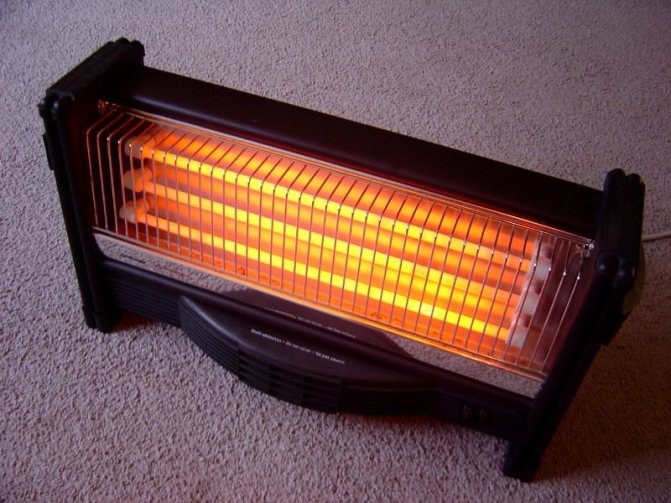
When choosing an underfloor heater, pay attention to the design
Carbon Fiber Infrared Heater
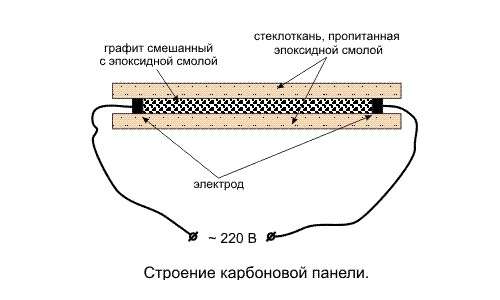

Hello! Carbon heaters are occupying an increasing niche in the heating appliance market. They can be classified as infrared heaters, but the heating element in them is a carbon fiber, the spiral of which is in a vacuum environment inside a quartz tube. What is it about carbon heaters if more and more consumers are purchasing them? It is noteworthy that these long-wave devices do not heat the air of the room, but heat the surfaces of objects located in the room, and heat penetrates into them to a depth of 2 cm. After that, the objects themselves (chairs, cabinets, etc.) become emitters of a comfortable heat.
Heaters with carbon heating element
IR waves are generated after heating carbon fibers with an electric current.As they spread around the room, they do not "burn out" oxygen, and the air in the room does not become less humid. A feature of the heating device is the ability to use it outdoors, but in this case, the area of effective heating is reduced.
Belonging to the class of infrared devices, a carbon heater differs from IR emitters using more traditional materials as a heating element (not to mention electric convectors, fan heaters and oil heaters) in greater efficiency. The energy efficiency of the new device is at least 2 times better than those of the listed devices. A carbon device with a capacity of about 1 kW will cope with the task of heating a room, like a heater of earlier designs, consuming 2-2.2 kW of electricity per hour. It should be added that its power of 1 KW is enough to effectively heat a room of 10 m2. When choosing a device in a store, consider this circumstance.
Manufacturers assure that carbon fibers used as a heating element have an almost unlimited resource. In addition, there is an opinion about the beneficial effects of the included device on the human body. The human body can also be imagined as an object warming up to a shallow depth. It is believed that a working emitter improves subcutaneous blood circulation and even fights inflammation in the joints and muscle ligaments. It is worth adding that, entering a cold room and turning on the device in the network, a person who is in the zone of its radiation almost immediately feels the effect of heat.
Today there are 3 types of carbon fiber heaters.
- Floor standing - it is compact and mobile. It can be moved from room to room if necessary.
- Ceiling - these devices can even be installed in suspended ceilings.
- Wall-mounted - the device is preferable if in the house you need to create an optimal microclimate for a child with maximum safety for him.
In addition, carbon heaters can be rotary and non-rotary, equipped with remote control systems. Most models are equipped with thermostats that automatically maintain the set temperature, all products are equipped with protection against overheating and power surges.
Like any technical device, the emitter is not without its drawbacks. One of them is heating only the strip where it is directed. In addition, if the device falls, the flask with the carbon spiral enclosed in it may be destroyed. True, the heaters are automatically turned off when their position changes abruptly.
Hopefully, you have a better understanding of what a carbon heater is and can choose one according to your needs.
APPLICATION OF CARBON HEATERS FOR HOME AND COTTAGE
For the home, the following designs of heaters are used.
Mobile.
They can be of any size and power (from a couple of hundred watts to 2-3 kW). In premises with stationary heat supply, they are used as an additional source of heat.
For such a case, it is not necessary to buy the largest and most powerful device. A housing up to 0.5 m long is enough, and a power of 750 W - 1.5 kW. Automation is generally not required (temperature controller only). Available both on support legs and on tripods, this is a typical floor heater.
Easily transported (transported) from place to place. Point comfort is ensured regardless of the ambient temperature: you simply place the carbon heater in front of you.
By the way, when using such "heating pads" you will never get a headache. Not a bad treatment option for older people with diseases such as sciatica or persistent chills.
Due to their small dimensions and low weight, they are ideal for heating a summer cottage.
Stationary options.
As a rule, such devices are designed to be mounted on the ceiling or wall. They can also be mobile, just no support legs are provided in the design. Since the heater is located at a distance from the user, an automation or control panel is required.
You can connect a carbon heater to the “smart home” system, or program it to turn on when you arrive (see the material on heating control). It does not directly heat the air, but objects in the room will receive a charge of heat under the influence of infrared radiation.
Despite the fact that a carbon heater is quite economical, it is irrational to use it as the main (and even more so the only) heat source. The exception is carbon fiber heaters in the underfloor heating system, but that is a topic for another article.
Semi-stationary floor heaters.
Such devices are often found in cafes: they are made in the form of a kind of pyramids, and radiate heat in all directions.
Carbon heater: advantages, disadvantages and features of use
HEATING ELEMENTS
Electro-conductive properties of carbon fibrous materials allow using them in manufacturing of woven heaters, nonmetallic electro heating wires, heating elements of an infra-red range, textile products with electro heating etc. The electro-conductive materials of different textile structure and different linear resistance values are produced on the bases of carbon fibrous material UVIS
CARBON TAPES
| Width, mm | Thickness, mm | Weight of 1 running meter, g | Resistance, Ohm / m |
| 15+1,0 | 0,6+0,1 | 4,0÷4,5 | 15,0+2,0 |
| 20+2,0 | 0,6+0,1 | 5,5÷6,0 | 14,5+2,0 |
| 44+2,0 | 0,4+0,1 | 7,0÷8,0 | 14,0+1,0 |
| 44+2,0 | 0,5+0,1 | 12,0÷13,0 | 6,5+0,5 |
| 100+5,0 | 0,5+0,1 | 28,0÷28,5 | 3,0+0,5 |
| 550+10,0 | 0,5+0,1 | 160,0÷180,0 | 1,0+0,5 |
COMBINED CARBON TAPES AND FABRICS
Patent Russian Federation 2114942, kl. 6D03D 15/00
| Width, mm | 100÷800 |
| Thickness, mm | 0,5÷1,0 |
| Resistance, Ohm / m | 1,5÷20,0 |
CARBON THREADS
| Linear density, tex | Resistance, Ohm / m |
| 70+310% | 720+10% |
| 100+10% | 515+15% |
| 205+10% | 250+15% |
| 400+12% | 130+15% |
Carbon fibrous materials offer:
- wide range of electric characteristics due to different techniques of weaving, twisting etc;
- large heating elements which have very uniform temperature distribution among the surface (∆Т <2оС)
- heating elements having very high convective heat transfer
- guaranteed longevity of heating elements (30 years and more)
- nature-friendly articles
- dry and soft heating
NON-METAL HEATING WIRES
Insulation materials: fluoroplastic, silicon plastic, organic-silicon rubber, polyvinylchloride.
Technical parameters:
| Resistance, Ohm / m | 80; 120; 250 |
| supply voltage, V | 12÷220 |
| Electric durability of isolation, not less than kV | 15 |
| Optimum temperature of heating оС | 20-80 |
| Maximum temperature of heating оС | 180 |
| Diameter of a wire on isolation, mm | 1,5÷2,0 |
| Minimum bending radius, mm | 5 |
| Operating mode | long-term |
| Long-term TBF, hours | 10 000 |
| Retention period | 10 years |
Main advantages in comparison with metal heating wires:
- stability at multiple alternating deformations
- high specific resistance
- lower specific heat duty
In perspective
- The combined isolation
- Resistance from 10 to 500 ohm / m
- Supply voltage from 6 to 380 V
THE SYSTEM OF ELECTRIC HEATING OF THE FLOOR
Patent Russian Federation 2124612, kl. 6Е04F15 / 18
| Manufactured with a heating elements From a carbon fibrous material | Provide | Advantages comparing with cable wires |
|
|
|
HEATING ELEMENT OF AN INFRA-RED RANGE OF LENGTHS WAVES
Radiator - a carbon fibrous material with the modified surface
Technical parameters:
- Electric capacity - up to 2000 W (standard - 900 and 2000 W)
- Supply voltage - 220 V (possible 24, 100, 110, 230, 240 V), 50-60 Hz
- 95% rated power output time less than 15 sec.
- Rated power output time less than 30 sec.
- Capacity share in infra-red range up to 99%
- Length of the waves, corresponding a maximum of a spectrum of radiation 2.5 - 3.5 micron
- Radiating ability - 0.99
- Temperature on a surface of radiator less than 800 ° C
- Length of quartz tube - up to 1000 mm (standard 550 and 1000 mm)
- Diameter of quartz tube - 12-16 mm
- Life time - more than 10000 hours
- Vacuum in quarz tube up to 10-4
- Design - linear, ring, u-shaped, with a covering from REM-metals and gold reflector
Application:
- Heating of household and industrial premises
- Electrical household appliances
- Physiotherapy
ELECTROHEATING TEXTILE PRODUCTS "CARITHERM"
- Are made on the basis of the carbon tapes, the combined fabrics and tapes and nonmetallic carbon wires. "Caritherm" is soft heat which that gives a non-polluting element carbon without oxygen burning.
- Such products as blankets, carpets and rugs, hot-water bottles, capes, mattresses and sleeping-bags are issued.
»CARITHERM» is:
- Ultralow, safe voltage 12V which moves through the isolation transformer - the adapter
- Products which can be applied in the medical purposes, as a source of soft heat to the people, suffering such illnesses as an osteochondrosis, a radiculitis, rheumatism, etc.
- Products which can be used for protection against overcooling during transportation of serious patient in reanimobiles; during the operations in field conditions
- Products which are recommended to be used in massage offices for comfort of the patient
- Products which create individual comfort and a cosiness during rest and work at office, in apartment, in a village-house especially in transition periods - in the early spring and in the autumn.
Technical parameters:
- Dimension, cm from 30x40 to 50x150
- Heating element - carbon fibrous material
- Power, W 10-50
- Domestic power supply by way of adapter
- Car power supply by accumulator
- Heating period, min - 8 - 15
Application:
- Heating of a sofa, an armchair, a chair in apartment, on a village-house, at office
- Heating of driver's slating and bunk during the traveling and car parking
- Heating of your pet places
More information on the topic:
- Transparent silicone tablecloth
- How an infrared heater works
- Attaching the cistern to the toilet
- How to decorate the balcony inside
- Spruce canadian conic
- Greenhouse infrared heaters

